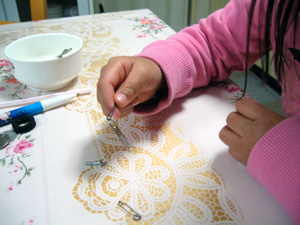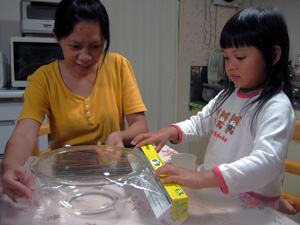While browsing through copies of old Nature volumes in the library, I happened to read an article titled, “What makes a good PhD student?” I was intrigued.
I am way past that point, having graduated about 7 years ago (my, has it been that long?). Honestly, I am not at all sure that I’ve gotten the most out of my PhD experience – for sure, half of the time I was struggling with the language barrier and trying my best to fast-track my learning of all the new tools at my disposal. The other half, well, I was trying to figure out what exactly I wanted to do with my life (I had musings like, do I really need a PhD? Why do I punish myself like this?).
In retrospect, I think that I had closely followed most of the pointers given by Chenevix-Trench. Working hard and long is a tried-and-tested formula, and arguably an unwritten rule for most university labs in Japan. I learned by observing how the other students in my laboratory worked – I didn’t know the full meaning of the word “workaholic” until I came to Japan. I didn’t want to lag and I surely didn’t want them to get the impression that Filipinos are lazy.
So I survived and produced a number of publications (more than I was hoping for, in fact) within the ideal timeframe. I made it a point to graduate in three years’ time, because I didn’t think that I would get any extension for my scholarship. It was make-it-or-break-it deal, no other way. Working long days all week surely was part of the strategy – but it was easy to do because I was not married yet, nor did I have any children then. Otherwise, things would have been entirely different.
But admittedly, the long hours only managed to help me maintain a virtually “constant” presence at the lab. I didn’t necessarily get more creative insights because I stayed longer at the lab. Interaction was minimal, so was the supervision. Still, I was working like crazy. Everyday I hit the sack exhausted and spent. From time to time, I asked myself, is this the way it’s supposed to be? And what exactly do I get from all of these? Times like that I really had trouble finding the right motivation and inspiration.
There is another article, also posted at Nature.com, which responded to Chenevix-Trench’s article. I am posting the whole article below. I found myself agreeing with most of what the authors wrote. The anecdote about Rutherford asking the student, “But when do you think?” hits the nail on the head. It’s an appropriate question not only for PhD students, but for researchers and postdocs as well. How much time do we really spend thinking as opposed to working? Somebody should have given me this article years ago. If I realized that there is more than one route to PhD, I probably would have taken a different path. But then again, it is still very much relevant to my current post-doc experience. It is very appropriate to my current situation now, because unlike when I was still a student, I now have a family of my own. Time is not a luxury I can afford anymore. I don’t own my weekends anymore; my family does.
More than one route to PhD success
Two researchers offer their take on how to succeed as a PhD student.
Sarah Bekessy1 & Brendan Wintle2
The idea of a one-size-fits-all model for PhD study is simplistic, patronizing and bad for science. A recipe such as Georgia Chenevix-Trench’s, detailed in “What Makes a Good PhD Student?” (Nature 441, 252; 2006) is just one model for PhD success.
It is a mistake to promote a corporate culture of bulging briefcases, long hours and working weekends as signs of good research practice. PhD students should be judged on their insight and the outcome of their work, not by the number of hours they spend working.
Ernest Rutherford once asked a student who was working one evening whether he also worked in the mornings. The student proudly answered yes. “But when do you think?” Rutherford replied. He was convinced that the creative scientists spent evenings and holidays relaxing with their families, and imposed strict limits on the hours his students worked. A high proportion of them went on to win Nobel prizes.
Chenevix-Trench’s model ignores calls from employers and graduates for PhD programmes that build transferable skills. In 2000, a survey by the National Association of Graduate-Professional Students found that most graduates believe that there are few research-only academic positions. Those surveyed wanted more interdisciplinary PhD programmes that encourage teaching experience and provide a meaningful entrée into faculty life. A survey by Bettina Nyquist and Jody Woodford of 365 individuals, including PhD students and people working in education, academia and government, also found graduate education to be too narrow (Reenvisioning the PhD: what are our concerns? Centre for Instructional Development and Research, University of Washington, Seattle; 2000).
Chenevix-Trench errantly blames high PhD attrition rates on poor academic standards and lack of passion or hard work. A study by Barbara Lovitts and Cary Nelson (Academe 6, 44–50; 2001) found no meaningful difference in academic performance between completers and non-completers. Graduate students who don’t finish their degrees are typically less integrated into the department, suffer intimidating, hostile or laissez-faire departmental culture, and have poor relationships with supervisors.
Academics must heed the serious consequences of poor supervision if they are to strive for the best outcomes for students and society.
1 Sarah Bekessy is a senior lecturer at the Royal Melbourne Institute of Technology University, Australia2 Brendan Wintle is a senior research fellow at the University of Melbourne.
 When I became a mom, I wasn’t so much concerned about being smarter than I was about being less productive at work. I knew that I had to make sacrifices as I try to juggle career and parenting. Before I had Aya, I used to stay as long as my colleagues at work. When Aya was born, I had to rush home earlier than everyone else. But since I know that I had to go home earlier, I found myself carefully planning in advance how exactly I will spend the day so that I will be able to maximize my time at work. The result is that my efficiency at work has also drastically improved. Gone are the idle moments spent at the PC surfing the web, taking 15-30 minutes of coffee breaks, or friendly chitchats with friends. I got smarter in the sense that I learned how to manage my time more efficiently. I may not be 100% objective here, but the way I look at it, in terms of productivity, I certainly wasn’t performing any worse than when I didn’t have a baby to look after!
When I became a mom, I wasn’t so much concerned about being smarter than I was about being less productive at work. I knew that I had to make sacrifices as I try to juggle career and parenting. Before I had Aya, I used to stay as long as my colleagues at work. When Aya was born, I had to rush home earlier than everyone else. But since I know that I had to go home earlier, I found myself carefully planning in advance how exactly I will spend the day so that I will be able to maximize my time at work. The result is that my efficiency at work has also drastically improved. Gone are the idle moments spent at the PC surfing the web, taking 15-30 minutes of coffee breaks, or friendly chitchats with friends. I got smarter in the sense that I learned how to manage my time more efficiently. I may not be 100% objective here, but the way I look at it, in terms of productivity, I certainly wasn’t performing any worse than when I didn’t have a baby to look after!  After a week, I received a similar instant message from my sister-in-law. This time, the message was an invitation to view some photos in some website by clicking the provided link. Since there was no other note included, I suspected that the message was not from her. My suspicion was confirmed when after a few seconds, another message was sent. Hmm, another compromised messenger account, I thought. I sent a message back and advised her to change her messenger password ASAP.
After a week, I received a similar instant message from my sister-in-law. This time, the message was an invitation to view some photos in some website by clicking the provided link. Since there was no other note included, I suspected that the message was not from her. My suspicion was confirmed when after a few seconds, another message was sent. Hmm, another compromised messenger account, I thought. I sent a message back and advised her to change her messenger password ASAP. 













